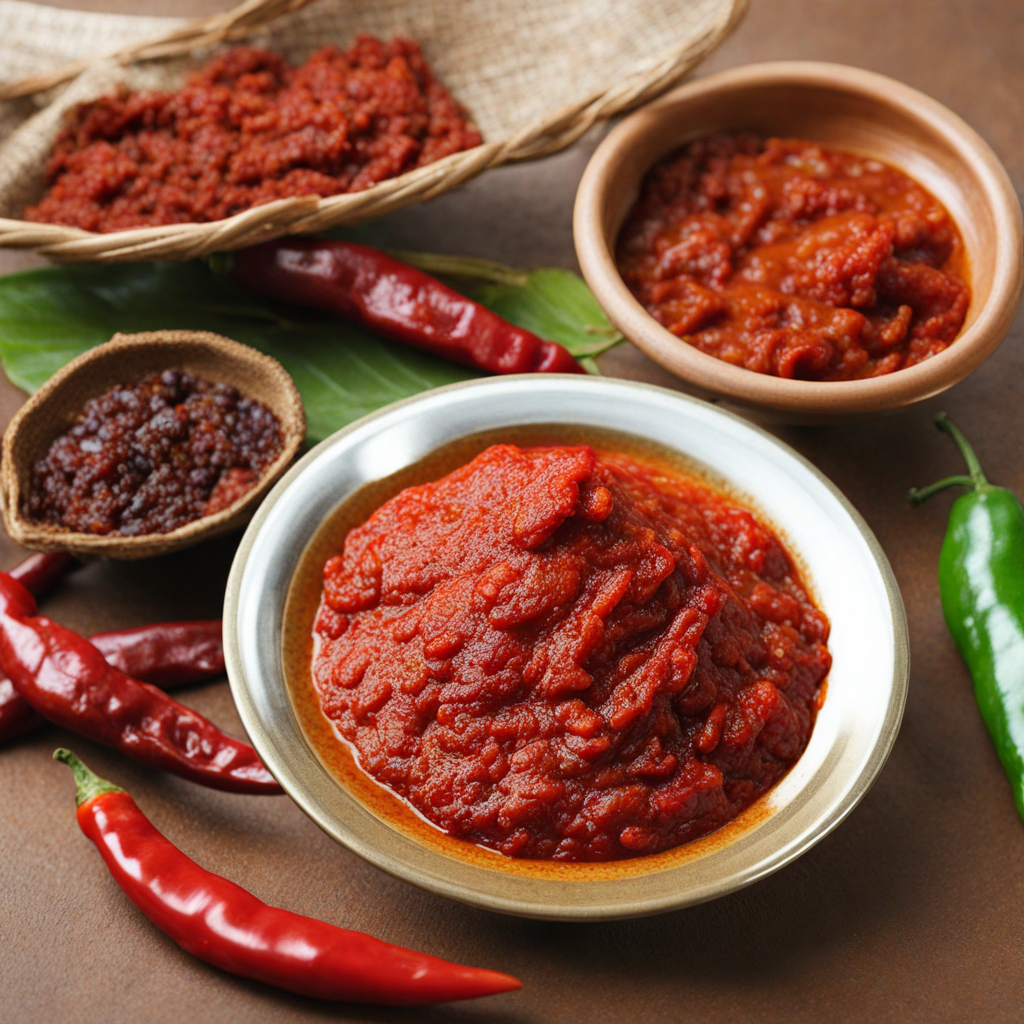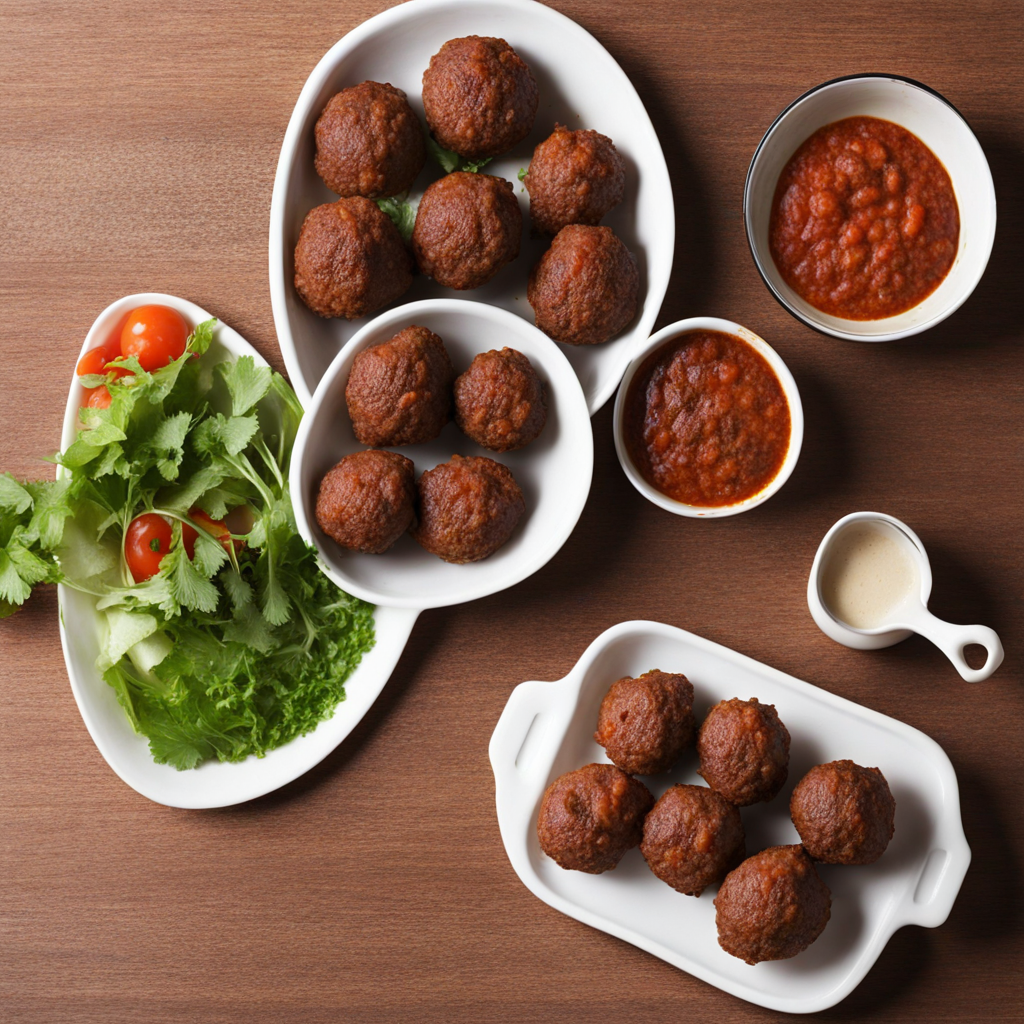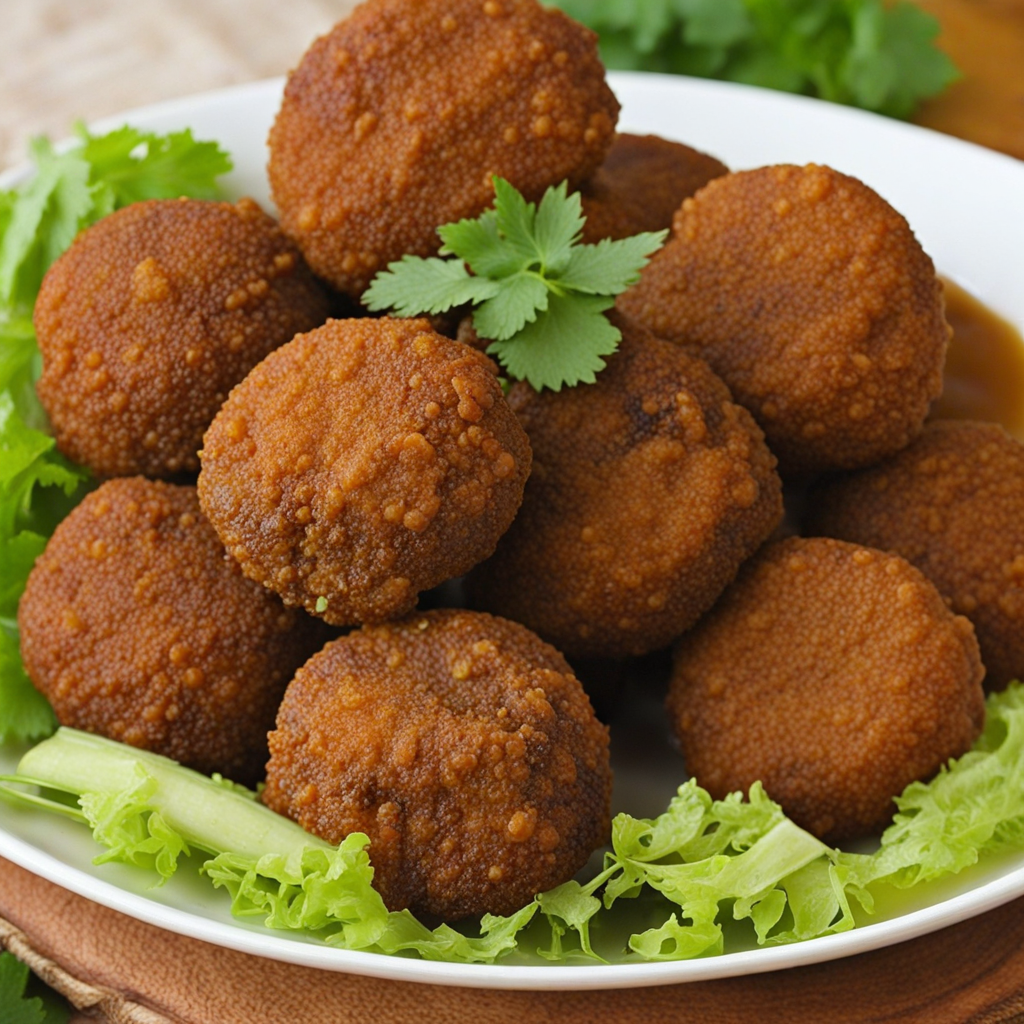Shata
Shata is a vibrant and spicy condiment hailing from Sudan, known for its ability to elevate the simplest of dishes with its unique flavor profile. Made primarily from a blend of fresh green chilies, garlic, and a variety of spices, Shata offers a tantalizing kick that awakens the palate. The chilies, which can vary in heat, are often complemented by the zing of lemon juice and the warmth of ground cumin, creating a complex taste that is both invigorating and satisfying. This condiment is a staple in Sudanese cuisine, frequently enjoyed alongside traditional dishes such as stews, grilled meats, and flatbreads, adding depth and character to every bite. What sets Shata apart is its versatility; it can be used as a dipping sauce, a marinade, or simply a topping to enhance any meal. The freshness of the ingredients ensures that each batch carries a distinct flavor, making it a beloved addition to any table. Its vibrant green color is as appealing as its taste, often enticing diners to indulge more than they initially planned. For those who appreciate heat, Shata can be a delightful challenge, inviting you to explore the balance of spice and flavor in your culinary experiences. In Sudan, Shata is often a communal affair, with families preparing it together and customizing the heat level to suit their preferences. This shared preparation not only strengthens bonds but also allows for creativity in crafting the perfect blend. The result is a condiment that not only embodies the essence of Sudanese culture but also encourages exploration and enjoyment of new flavors. For anyone looking to discover a taste that is bold, fresh, and full of personality, Shata is a must-try that promises to transform your meals into a vibrant celebration of taste.
How It Became This Dish
The History of شطة (Shatta) in Sudan #### Origins of شطة Shatta, a fiery chili paste, is a culinary staple in Sudanese cuisine, embodying the rich flavors and vibrant culinary heritage of the region. The term "shatta" is derived from the Arabic word for "hot," a fitting descriptor for this tantalizing condiment that often features prominently in Sudanese meals. Its roots can be traced back to the indigenous practices of using local spices and ingredients, with chili peppers being introduced to the African continent from the Americas during the Columbian Exchange in the 16th century. Chili peppers quickly adapted to the climate and soil of Sudan, becoming an integral part of local agriculture. Historically, the use of spices and heat in food preparation can be linked to the cultural exchanges along trade routes, particularly the trans-Saharan trade, where flavors and culinary practices mingled between different civilizations. The use of chili, along with other spices like garlic, coriander, and lemon, reflects a blend of indigenous Sudanese ingredients and those introduced by Arab traders and settlers. #### Cultural Significance In Sudan, shatta is more than just a condiment; it is a symbol of hospitality and communal sharing. Traditionally served at the table, it accompanies a variety of dishes—from stews and grilled meats to bread and vegetables. The preparation of shatta is often a communal activity, where families or friends come together to grind fresh ingredients, creating a sense of unity and connection through food. The significance of shatta extends beyond mere flavor. It embodies the Sudanese ethos of resilience and adaptability. Much like the people of Sudan, who have faced numerous challenges throughout history, shatta is a bold and uncompromising flavor that has become a defining element of Sudanese identity. In a country marked by cultural diversity, shatta serves as a unifying thread, bringing together various ethnic groups and their culinary traditions. Moreover, shatta is often featured in celebratory occasions such as weddings and festivals, where the sharing of food signifies community bonds and cultural heritage. The spice is a conversation starter, often eliciting stories of family recipes passed down through generations, each with its own unique twist on this beloved condiment. #### Development Over Time As the years have passed, shatta has evolved, reflecting the changes in Sudanese society, agriculture, and culinary practices. In the past, shatta was primarily made from locally sourced ingredients, with each region boasting its unique version influenced by local tastes and available produce. For instance, some variations of shatta might include additional ingredients like tomatoes or nuts, while others might focus solely on the heat of the chili and the aromatic qualities of garlic and spices. The rise of urbanization in Sudan has also impacted the production and consumption of shatta. In urban centers like Khartoum, where modern conveniences and globalization have introduced a wider array of ingredients, traditional recipes have adapted to include new flavors or prepared in different ways. While many families continue to make shatta from scratch, pre-packaged versions have started to appear in local markets, catering to a younger generation that may prefer convenience over traditional methods. Despite these changes, the essence of shatta remains the same—a potent mix that embodies the spirit of Sudanese cooking. Home cooks often personalize their shatta, experimenting with heat levels and additional flavorings, ensuring that each batch reflects individual tastes and family traditions. This adaptability has allowed shatta to endure, remaining a beloved staple in Sudanese households while embracing contemporary culinary trends. #### Culinary Uses and Pairings Shatta is typically served alongside traditional dishes such as ful medames (a fava bean stew), kebab, and various types of bread like kisra (a fermented flatbread made from sorghum). Its versatility allows it to complement a wide array of flavors, from the earthy richness of lentils to the smoky char of grilled meats. The heat of shatta enhances the overall dining experience, stimulating the palate and encouraging diners to savor their meals. In addition to its traditional uses, shatta has found its way into modern recipes, often used in marinades, dressings, and dips. Chefs and home cooks alike experiment with shatta, incorporating it into fusion dishes that highlight its bold flavors while paying homage to its roots. This innovation has helped keep shatta relevant in contemporary Sudanese cuisine, illustrating how traditional foods can evolve while still honoring their origins. #### Conclusion The story of shatta is one of resilience, adaptability, and cultural significance. From its origins rooted in the agricultural practices of Sudan to its place as a cherished condiment in homes and restaurants alike, shatta represents the heart of Sudanese culinary heritage. It serves as a reminder of the rich tapestry of flavors that define Sudan, reflecting a history of trade, cultural exchange, and community. As Sudan continues to navigate the complexities of a modern world, shatta remains a steadfast companion at the table, a symbol of hospitality and cultural pride. Whether enjoyed in its traditional form or reimagined in contemporary dishes, shatta endures as a vibrant testament to the enduring power of food to connect people, tell stories, and celebrate the rich diversity of human experience.
You may like
Discover local flavors from Sudan







